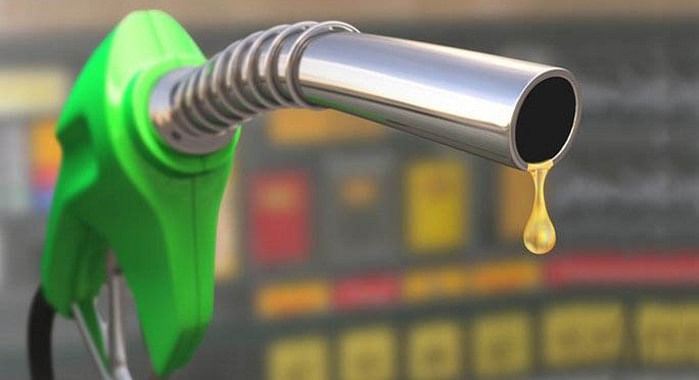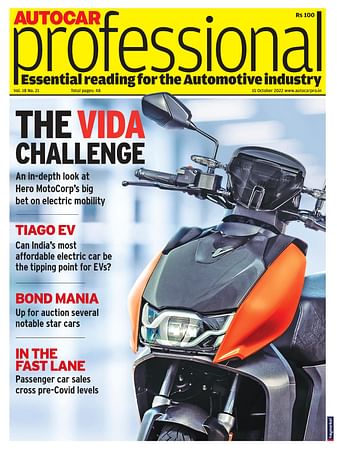World Environment Day Special: 10 top tips to improve fuel efficiency
While we can’t do anything about the price of fuel, here are a few pointers on how to increase your car's fuel economy and s-t-r-e-t-c-h ever litre of fuel to the max.
Today – June 5 – is World Environment Day. It is the United Nation's principal vehicle for over four decades to encourage worldwide awareness and initiate action to protect the environment, which is a dire need for the world today.
World Environment Day has today become a global platform for public outreach, with participation from over 140 countries annually.
Like Earth Day, which is celebrated on April 22 and marks the anniversary of the birth of the modern global environmental movement in 1970, World Environment Day sees major corporations, NGOs, communities, governments and celebrities worldwide advocate environmental causes.
World Environment Day is a collective call for preserving and conserving nature and environment, a reminder of our responsibility towards sustainable use of resources. It is celebrated every year to raise global awareness for taking positive environmental action. It was established by the United Nations General Assembly in 1972 on the day of the United Nations Conference on the Human Environment. The first World Environment Day was celebrated in 1973 at Stockholm. Since then it is hosted every year by a different city with a unique theme. This year, it is being hosted by Canada, and the theme for the year is 'Connecting People to Nature'.
Over the years, World Environment Day has grown to be a broad, global platform for public outreach that is widely celebrated by stakeholders all over the world. It also serves as the ‘People’s Day’ for taking positive action for the environment.
The onus is on each and everybody to take action in their daily lives that will help them minimise activities that contribute to harming nature and enhance those that make the planet a better place.

Derive maximum mileage for your fuel
While vehicle and component manufacturers are taking to new materials, technologies and processes to lightweight vehicles to stretch every litre of fuel to the maximum, motorists can also their bit to conserve fuel.
The cost of motoring, unfortunately, is going only one way – up. While we can’t do anything about the price of fuel, we can offer you a few pointers on how to increase your car's fuel economy. Follow these 10 handy tips to improve efficiency and get the best kilometres per litre from your car.
Tip 1: Remove weight
Remove excess weight. Take unnecessary bulky items out of the car, such as that golf bag you carry for the weekend and forget to take out for the rest of the week. Also, if the kids are staying at home, so can their teddy bears and other knick knacks.
Tip 2: Reduce drag
Remove external carrying kit such as roof boxes whenever they aren’t being used. The car has to work harder to cut through the air due to the extra wind resistance such items create.
Tip 3: Basic maintenance
Keep your car well maintained and serviced regularly. Pump up your tyres to reduce resistance and get the car serviced regularly.
Tip 4: Plan journeys
Plan your journey. Avoid traffic black spots and busy times if possible, and get the map or sat-nav out to avoid getting lost and driving farther than necessary.
Tip 5: Turn off air-conditioning
Unless it’s really cold or uncomfortably warm in the car, leave the air-con turned off. Using it can put a strain on the engine and burn more fuel, especially at low speeds. The same goes for heated windscreens, demisters and other electrical appliances.
Tip 6: Change up early
Be gentle and change gear early. Accelerate and brake gently, and change to a higher gear as soon as possible. As a general guide, change up before 2000rpm in a diesel and 2500rpm in a petrol, without letting the engine struggle at low revs.
Tip 7: Use engine stop/start
Lots of modern cars are fitted with engine stop-start technology, which can be great if you let it work properly. Sit with your foot on the clutch and the engine will continue to burn fuel; take it off and you’ll save money and fuel.
Tip 8: Obey speed limits
Stick to the speed limits – it helps conserve fuel. Where it is appropriate, driving at a steady speed of 80 kilometres per hour (kph) instead of 110kph can improve fuel economy by 25 percent.
Tip 9: Read the road
Use gravity to your advantage and build up momentum when going downhill to help you then get uphill, rather than accelerating more to get up the incline. The best way to do this is to read the road as if you were on a pushbike and accelerate accordingly.
Tip 10: Use gravity
Look far ahead while driving and keep moving where possible by anticipating obstacles. Easing off the throttle and keeping momentum is better than speeding up, braking and then starting all over again.
Lead image courtesy Valeo
RELATED ARTICLES
Maruti's Kharkhoda Plant construction in full swing
Maruti Suzuki has proposed to spend more than Rs 7,000 crore for the construction and commissioning of this plant which ...
July 2024 From R&D incentives to EV infrastructure: What auto components industry expects from Budget 2024
July 2024 From R&D incentives to EV infrastructure: What auto components industry expects from Budget 2024
Vemuri Young Artist from India Recognized as one of the Winners at 16th Global Toyota Dream Car Art Contest
Vemuri Young Artist from India Recognized as one of the Winners at 16th Global Toyota Dream Car Art Contest






 By Autocar Pro News Desk
By Autocar Pro News Desk
 04 Jun 2017
04 Jun 2017
 20112 Views
20112 Views









